Whether you see a king cobra or commoner sort, they are frightening creatures. While most humans would probably feel safer standing 10 feet from a venomous snake than they would 3 feet, they ay not be safe. Not all cobras need to bite you to inflict serious harm. Spitting cobras are venomous snakes that can deliver a blinding spray or mist of venom at the eyes of their enemies.
In this article, we’re going to take a closer look at how spitting cobras manage to spit venom, why they do it, and where they live around the world. That way, you’ll know more about their behaviors and where you can expect to see them in the world.
How Do Spitting Cobras Spit Venom?
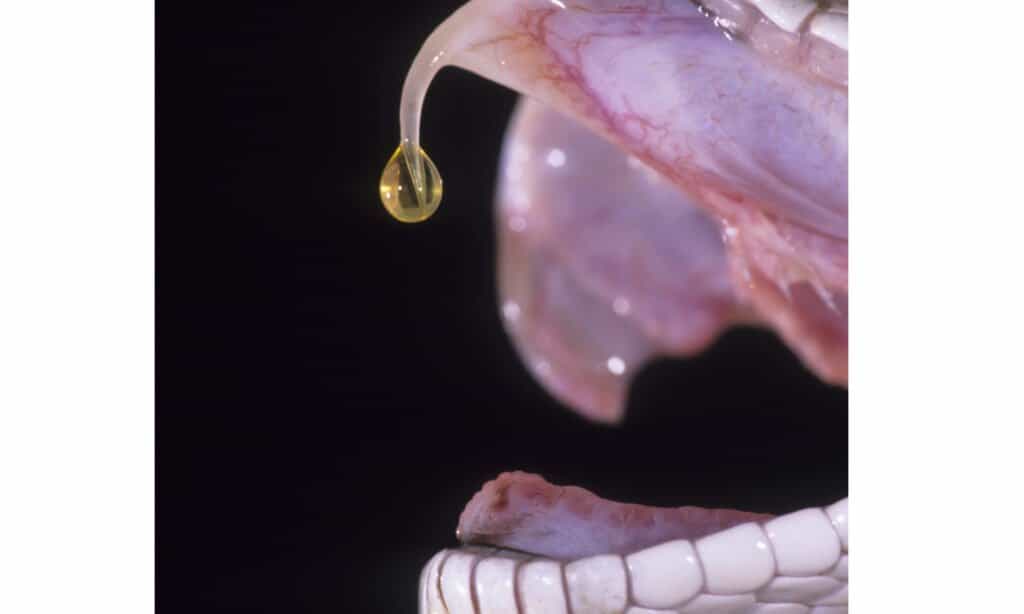
Instead of oozing out of the fangs, spitting cobra venom is sprayed out via smaller openings
©Joe McDonald/Shutterstock.com
Spitting cobras do not spit venom in the way that mammals might spit. Instead, spitting cobras rely on a unique mechanism to send their venom at their prey. They have muscles located around their venom glands. When they decide to spit at a target, they will aim and squeeze those muscles.
That sends the venom into the cobra’s hollow fangs at high pressure. Normal cobra fangs have a sizeable hole in the fangs that they can use to inject stream venom into their prey’s wounds. Spitting cobras have much smaller holes in their fangs. When the venom comes into their fangs at high pressure, it’s sprayed outward at a high rate of speed and across a fair distance.
Some cobras can spit as far as 6 to 10 feet from their mouths. Moreover, they deliberately aim for the eyes of their victims while spraying the venom outward in two jets or a misted spray. They will also move their heads while spraying in hopes of landing a direct hit in the eyes, blinding and causing severe pain to the victim.
Now that we know how spitting cobras attack, we can start to look at other important questions.
Why Do Spitting Cobras Spit Venom?
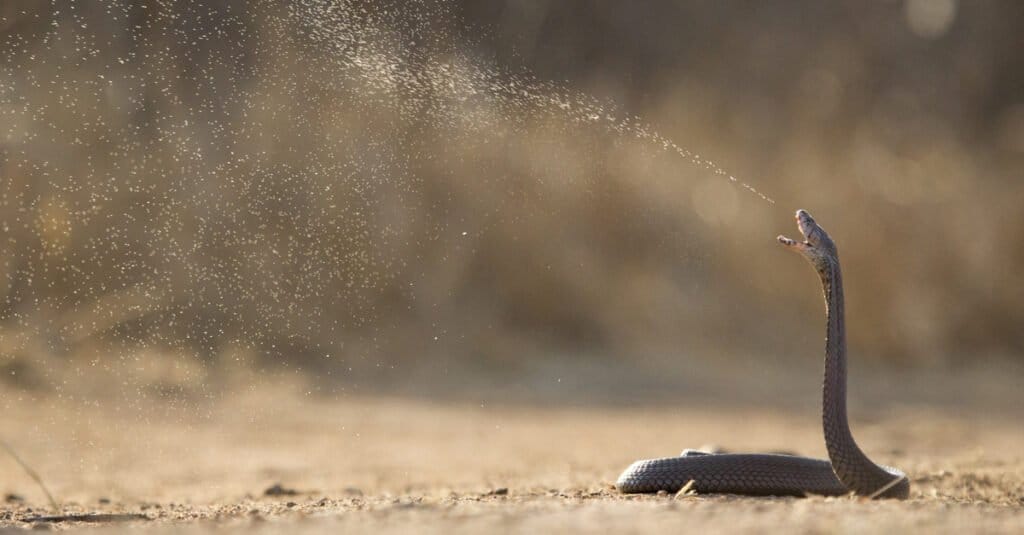
Mozambique Spitting Cobra
(Naja mossambica) spitting its venom in defense.
©Stu Porter/Shutterstock.com
Spitting cobras spit venom towards the eyes of humans or animals to defend themselves against a perceived threat. Some believe that spitting cobras developed their method of attack specifically to deal with human beings. Studies have found that spitting cobras aim at the eyes of a human being, or a facsimile of a human, when they launch their attack.
They will also perform undulating head movements to increase the chances of hitting the harassing creature in the eye. All the snake needs to do is to blind the creature in one eye and the fight will probably not progress.
Thus, spitting cobra attacks from a distance to prevent harm to itself and to dissuade attackers from approaching. Unfortunately, that spray travels at such a fast speed that it’s mostly impossible for a human to dodge. Some animals, like the mongoose, have the agility and reflexes to potentially dodge a spitting attack.
However, if they miss their target, the majority of cobra venom will not do much to the victim. The venom spray may irritate their skin, but it will not be enough to kill them.
Can All Cobras Spit Venom?
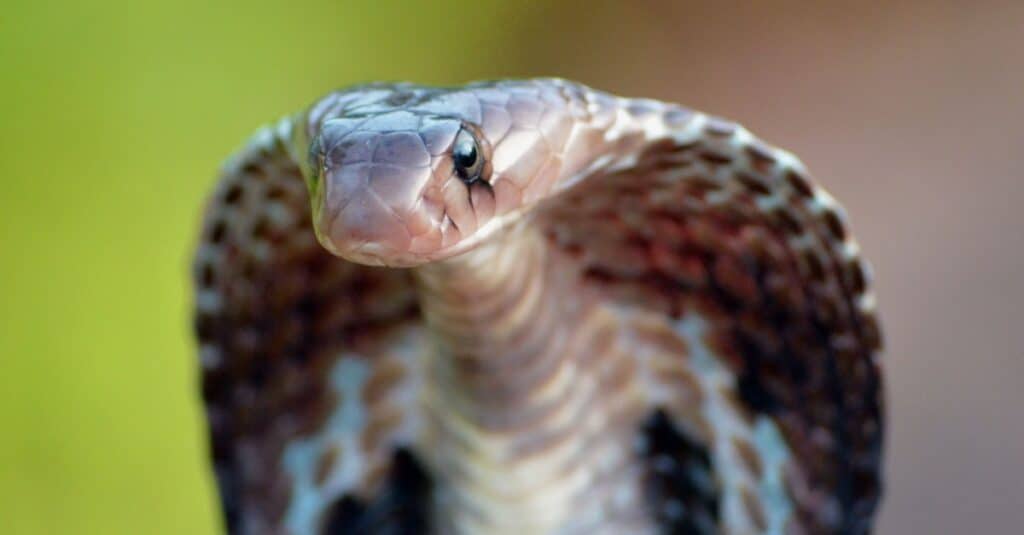
Indian cobras
bite their foes rather than spitting venom
©iStock.com/insaneDynamix
No, most cobras cannot spit their venom from their fangs. Spitting cobras have specialized fangs with smaller holes in them that allow the pressure generated on their venom glands to send the venom out from the snake’s mouth.
The majority of cobras have much larger holes in their fangs that do not allow them to send the venom outward in a jet. Instead, they will bite their prey to inject the venom into them. That’s the only way they have to attack.
Currently, about 20 species of spitting cobras have been recognized, and that is far fewer than the total number of cobras that exist. Thus, you are more likely to encounter a biting cobra than a spitting cobra.
Where Do Spitting Cobras Live?
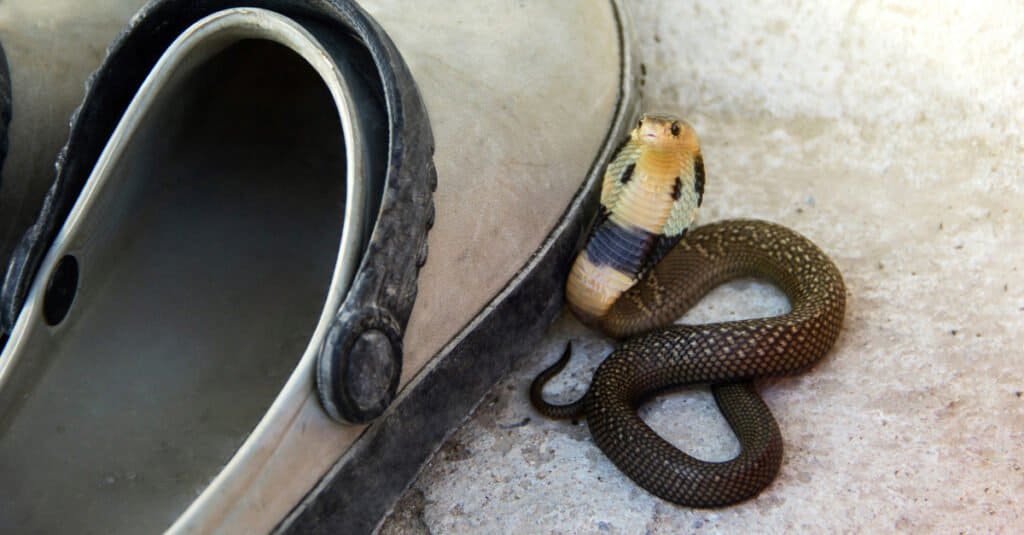
Monocled spitting cobra baby (
Naja kaouthia) of Thailand.
©Ton Bangkeaw/Shutterstock.com
Like many other members of their species, spitting cobras live throughout most of Africa as well as parts of Southeast Asia. They are not tremendously common creatures when compared to other types of venomous snakes in the world.
Nevertheless, they are a significant threat in places where they do exist. Individuals may think that they are far enough away from the snake to be safe from harm, only for a stream of venom to hit their face. The best bet is to always give all snakes, venomous or not, a wide berth unless you’re trained to engage them safely.
How Do Spitting Cobras Kill Their Prey?
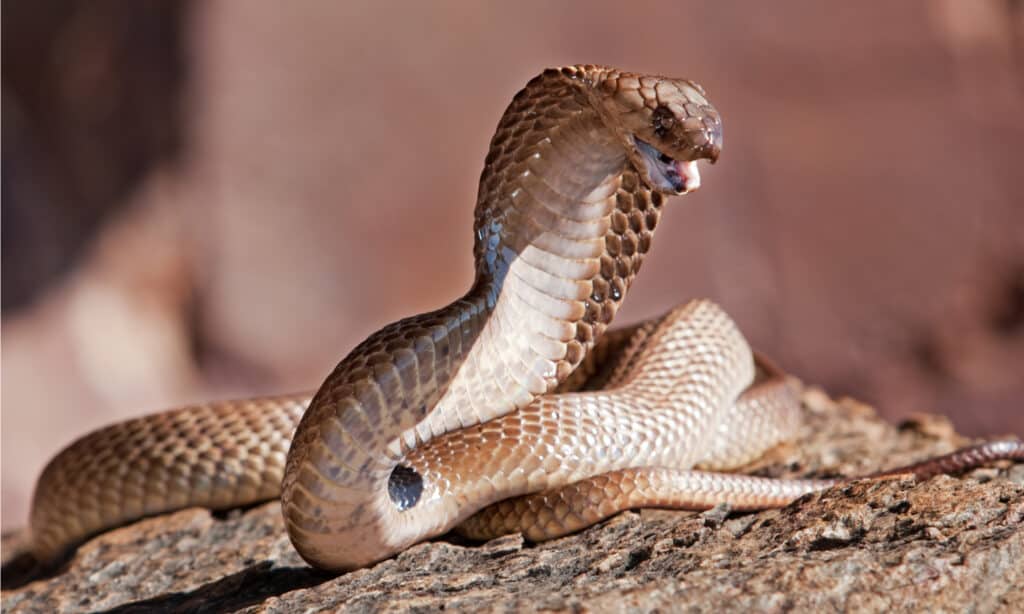
All cobras must bite their prey to kill them
©Martin Prochazkacz/Shutterstock.com
Spitting cobras kill their prey by biting to inject their venom. Although spitting cobras can send a stream of venom at their prey, it’s not going to kill them unless it’s injected into their bloodstream. Sure, these snakes can spit venom into the eyes of their enemies, potentially blinding them. Even if the snake did blind something they want to eat, that’s not enough to kill them.
Thus, spitting cobras are very similar to other members of the elapid family. They need to creep up and deliver a fatal bite to their prey. They must also ensure that their prey doesn’t turn the tables on them. After all, the venom can take a little while to do its work.
You do not have to worry about a snake spraying you with venom and dying. You will only be in mortal peril if the snake manages to bite you. More than anything else, their spitting method is a way to keep enemies away from them. They’ll use it on anything that they deem too large or dangerous to fight.
What Is the Largest Spitting Cobra?
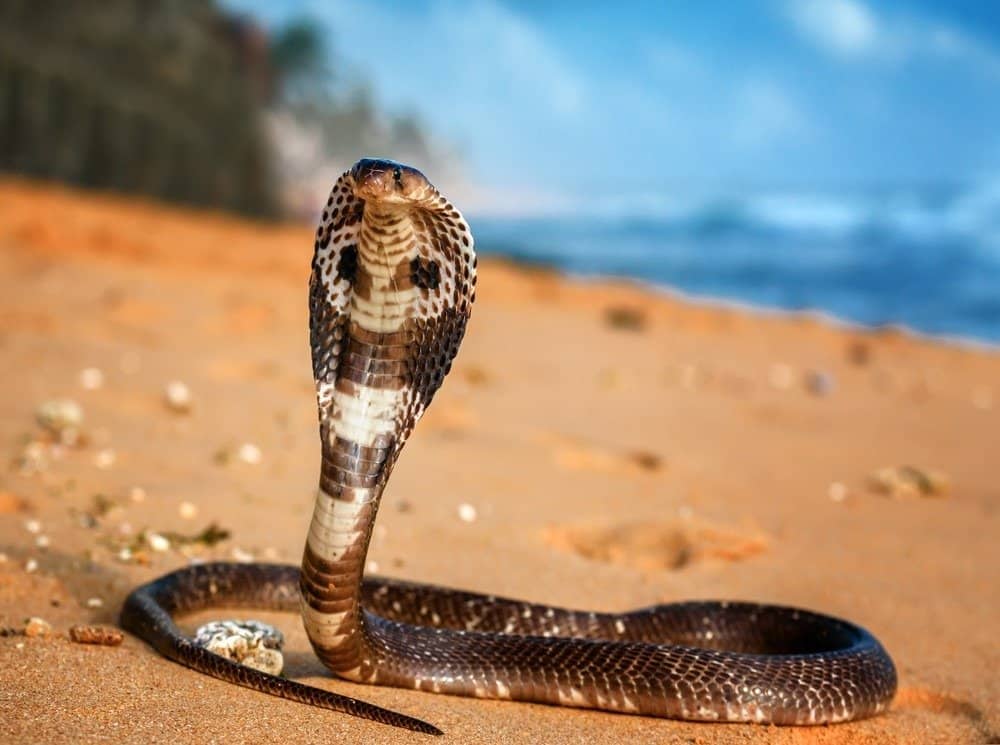
King cobras are larger than any spitting cobra
©Vova Shevchuk/Shutterstock.com
The largest spitting cobra is Ashe’s spitting cobra, a snake that goes by several names including Naja ashei. The snake can measure between 4ft and 7ft. The longest Ashe’s spitting cobra on record was closer to 9ft when it was caught.
Although that may seem like a very long snake, that spitting cobra is very small compared to its cousin, the king cobra. The longest recorded king cobra was almost 19ft in length! Of course, the king cobra is not a true cobra, but it looks the part!
All in all, spitting cobras are very interesting snakes. They can be very harmful at a distance and deadly up close. They are not found in many places around the world. Still, if you encounter one, the best thing you can do is get away from it and shield your eyes.
The photo featured at the top of this post is © Eugene Troskie/Shutterstock.com
Discover the "Monster" Snake 5X Bigger than an Anaconda
Every day A-Z Animals sends out some of the most incredible facts in the world from our free newsletter. Want to discover the 10 most beautiful snakes in the world, a "snake island" where you're never more than 3 feet from danger, or a "monster" snake 5X larger than an anaconda? Then sign up right now and you'll start receiving our daily newsletter absolutely free.
Thank you for reading! Have some feedback for us? Contact the AZ Animals editorial team.






